What Do Mourning Doves Eat? 5 Typical Foods
Last Updated on
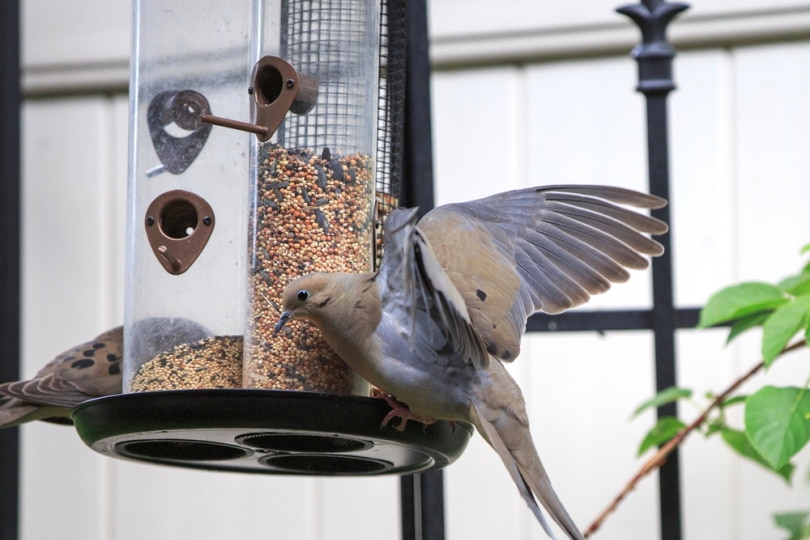
Mourning doves are a favorite bird of millions of avian enthusiasts for their low-key beauty and soft, comforting cooing. They have an attractive mix of muted colors, including brown, tan, and gray, and a bit of iridescence on their spotted wings. Interestingly, the male does the vast majority of the cooing you’ll hear when mourning doves come around to feed.
If attracting mourning doves to your yard is your goal, knowing what they like to eat is essential. To help, we compiled a list of foods mourning doves enjoy.

One Thing to Know Before You Start Feeding Mourning Doves
Many bird lovers use bird feeders to attract wild birds to their backyard. While it’s a great idea, you should know that mourning doves are foragers that stick mostly to the ground when searching for food. For that reason, a bird feeder isn’t necessary if mourning doves are the birds you want to attract. All you have to do is spread the food on the ground in your yard.
The 5 Typical Foods Mourning Doves Eat
1. Grass and Weed Seeds
One thing to know about mourning doves is that they are vegetarians. Unlike birds of prey, mourning doves never hunt but instead are foragers, staying on the ground to find food. Most of that food comes in the form of grass seeds and weed seeds, which are widely available to them in the wild. One of their favorite weed seeds is the Dove weed (aka tropic croton). Several others that mourning doves prefer include:
- Barnyard-grass
- Canary grass
- Colorado Grass
- Foxtail
- Johnson grass
- Panic grasses
- Pig weeds
- Plains bristle grass
- Pumpkin seeds
- Witch grass
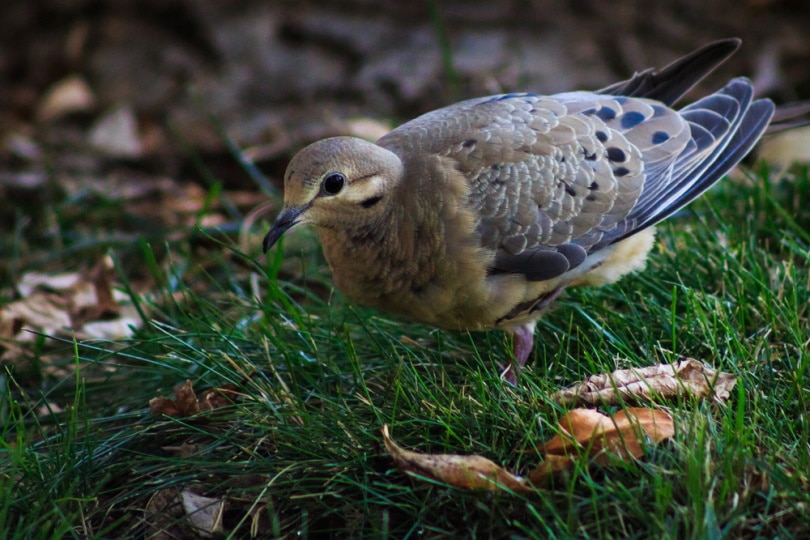
2. Grains
Although not typically on their diet because they don’t fall on the ground, mourning doves have a soft spot for grains of different types. Often you’ll see mourning doves gather on the ground underneath a bird feeder, eating the grains that have fallen or been pushed out by other birds (and squirrels). The grains most preferred by mourning doves include:
- Black oil sunflower seeds
- Buckwheat
- Cracked corn
- Grain sorghum
- Millet
- Milo
- Rapeseeds
- Rye
- Safflower seeds
3. Peanuts
Peanuts are not a typical food source for mourning doves. However, they enjoy peanuts if provided in the correct form. More importantly, peanuts are an excellent source of protein and fat that can benefit mourning doves, especially as winter approaches. If you plan to offer peanuts to the mourning doves in your yard, make sure they are:
- Shelled
- Roasted (you should avoid raw peanuts)
- Plain (no salt, sugar, or other ingredients)
- Avoid peanut hearts and shells
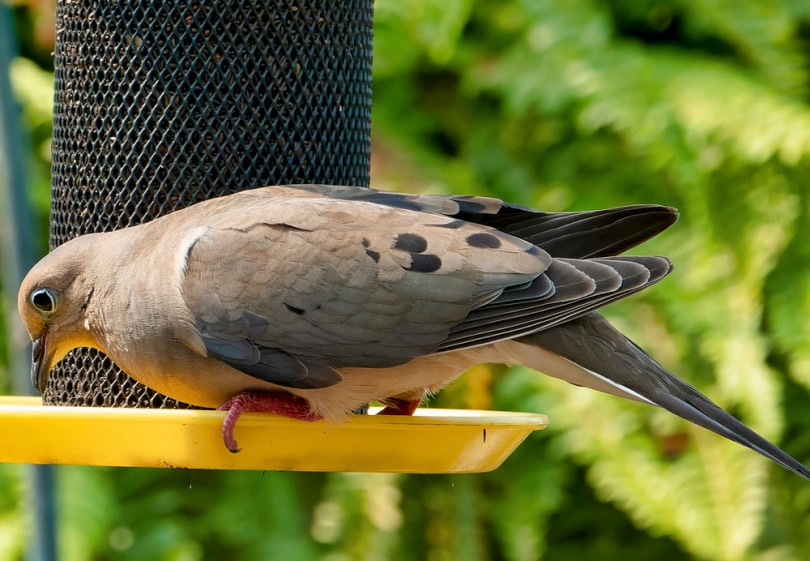
4. Fruits and Vegetables
Mourning doves are granivores, which means they mostly eat grains and seeds. Occasionally they will also eat insects, vegetables, and fruit if they find them on the ground, where they prefer to search. You can feed mourning doves fruits and veggies if you like, but offering only fruit and veggies isn’t a great way to keep them coming back. Some of the vegetables and fruits mourning doves will eat include:
- Apples
- Blueberries
- Carrots
- Grapes
- Raisins
- Raspberries
- Strawberries
- Tomatoes
- Watermelon
5. Insects
Although insects are not a favorite of mourning doves, they are foragers and, when presented with the opportunity, will eat several types of insects. That’s why having a yard full of insect life is critical if you want to attract mourning doves. If you use insecticides, you not only take away this food source but also risk poisoning the mourning doves that visit. The insects they eat, if given the opportunity, include:
- Caterpillars
- Cicadas
- Dried mealworms (You can purchase these at a pet store.)
- Ticks
- Wasps
- Worms
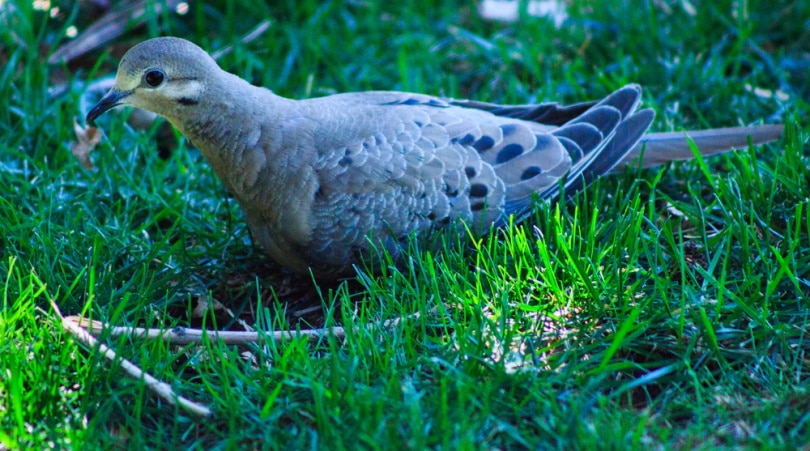

What Not To Feed Mourning Doves
We’ve seen what mourning doves enjoy eating and what you can give them to attract them to your yard. Now let’s take a quick look at what foods you should not give mourning doves (even though they might eat them). Some of the foods you should avoid giving to mourning doves include:
- Bread: Most store-bought bread is nearly devoid of nutritional content. If you want to give mourning doves a small amount of bread, it should be full-grain with seeds and without sugar.
- Black-striped (confectionary) sunflower seeds
- Flax seeds
- Canary seed: It’s too small for mourning doves to see.
- Large, unshelled nuts like peanuts, walnuts: They can’t crack open the shells.
- Suet in suet feeders: They can’t break off pieces with their beaks.
- Iceberg lettuce: It’s almost devoid of nutritional value.
- Food in tubes, cages, or mesh feeders: They much prefer food in ground feeders and larger platform feeders.
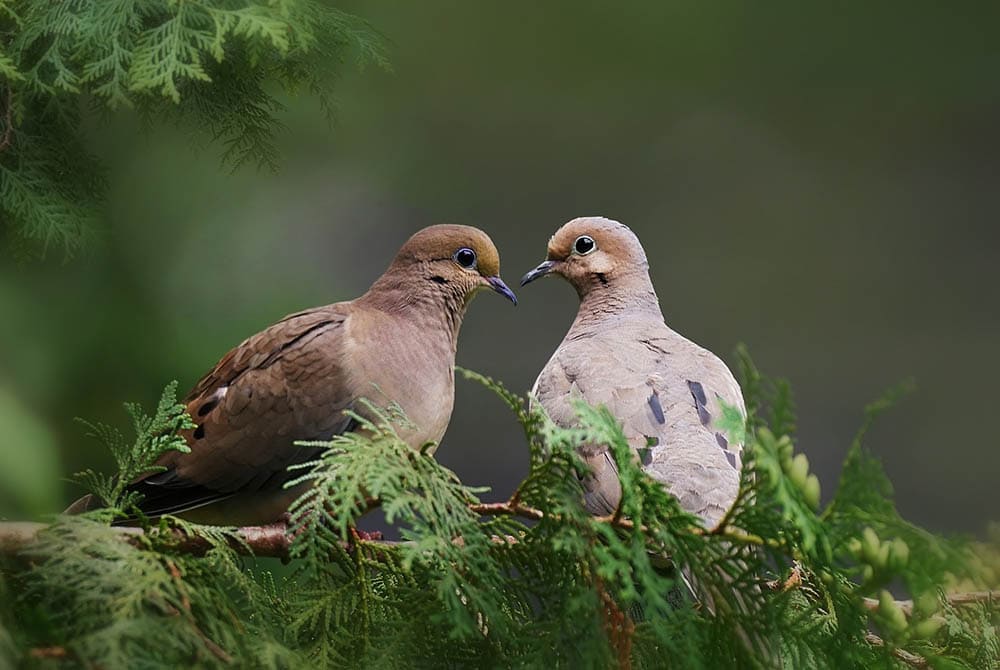
Should You Use a Bird Feeder To Attract Mourning Doves?
As we’ve mentioned, mourning doves are foragers that stay on the ground while looking for food. If you want to use a bird feeder to attract mourning doves, a larger, open-platform feeder is best. Also, a bird feeder placed lower to the ground, or hanging lower, is preferred. The reason is that mourning doves have larger wingspans, making smaller bird feeders a problem. They won’t fly to a feeder (in most cases) to get their food like other birds. Hanging a platform feeder under a picnic table works very well.

Final Thoughts
Attracting mourning doves to your yard is relatively easy and can be very rewarding. While they may come around to get food under a bird feeder, the best method to attract mourning doves is to scatter food in a small area of your yard with low or no grass. Also, always give mourning doves food in the same spot in your yard. In time, they will remember where it is and come back for more. However you decide to attract these lovely birds to your yard, we wish you the best of luck and many hours of avian enjoyment.
Featued Image Credit: DesignTop, Shutterstock
About the Author Greg Iacono
Greg Iacono is a self-taught writer and former chiropractor who, ironically, retired early due to back problems. He now spends his time writing scintillating content on a wide variety of subjects. Greg is also a well-known video script writer known for his ability to take a complex subject and make it accessible for the layperson.
Related Articles:
10 Types of Hummingbirds in Arkansas (With Pictures)
8 Types of Hummingbirds in Nebraska (With Pictures)
5 Types of Hummingbirds in Idaho (With Pictures)
3 Types of Hummingbirds in Mississippi (With Pictures)
8 Types of Hummingbirds in Kansas (With Pictures)
5 Types of Hummingbirds in West Virginia (With Pictures)
5 Types of Hummingbirds in Ohio (With Pictures)
Where Do Nuthatches Nest? Nuthatch Nesting Habits Explained
